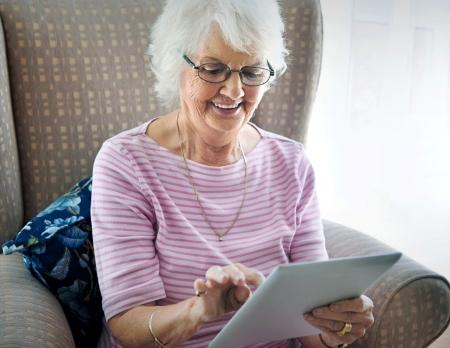Comcast Expands Low-Cost Broadband for Seniors

Comcast has expanded its pilot low-cost broadband service for senior citizens to the San Francisco area, the company said Wednesday.
The pilot – building on an earlier one in Palm Beach County Florida on Aug. 4 – is part of its Internet Essentials package.
Comcast is working with the San Francisco Department of Aging and Adult Services, the City’s SF Connected Senior’s Digital Literacy Training Collaborative, Self-Help for the Elderly, Community Technology Network, and the Community Living Campaign on the program.
Internet Essentials, Comcast’s low-cost broadband initiative is in its fifth year. Initially trargeted at low-income families in larger cities, the program has connected more than 500,000 homes and 2 million individuals. In California, the program has connected more than 280,000 low-income Californians to online access at home, of which more than 90,000 live in the Greater Bay Area. California now ranks first in the nation for Internet Essentials adoption, with the program reaching more than 23% of its estimated eligible population.
“We have made real and significant progress toward closing the digital divide for low-income parents and children across the country. In less than four years, Internet Essentials has connected more than 500,000 families, or more than 2 million low-income Americans, to the power of the Internet at home,” said Comcast executive vice president and chief diversity officer David Cohen in a statement. “Now, with our low-income senior citizen pilot in San Francisco, we are opening up a second front in our attack on the digital divide so these seniors can get connected to the Internet in their homes and use it to communicate with friends and family, access healthcare and financial information, and enjoy online news and entertainment.”
Since 2011, Comcast has made more than 25 key enhancements to the program. Earlier this month, the company doubled the service’s download speed to up to 10 Mbps downstream and providing a Wi-Fi router for no additional cost. Customers will be able to power multiple devices simultaneously and connect any Internet-enabled device, which could help save money on wireless bills.
According to Pew Research Center, about 47% of seniors (aged 65 and older) have high-speed Internet at home. Ranked by income level, only 25% of seniors with household incomes below $30,000 have home broadband, compared to 82% of seniors with household incomes at or above $75,000.
Multichannel Newsletter
The smarter way to stay on top of the multichannel video marketplace. Sign up below.
“Like every city across the country, San Francisco depends on the Internet to provide fundamental services to its residents, including information on governmental resources,” said San Francisco Mayor Ed Lee in a statement. “We have made great strides toward a larger vision of connectivity for our City as a whole to bridge the digital divide and ensure that our diverse communities have access to innovation, which include expanding free WiFi access to our public spaces including libraries and parks. Much more remains to be done, and I thank Comcast for partnering with the City to help us better connect our residents including offering affordable Internet access to our seniors by expanding the eligibility of its Internet Essentials program in San Francisco to include low-income seniors over 65, and also training our older adults on using and accessing technology so they learn skills necessary to succeed in the 21st Century.”
Comcast has invested about $240 million in cash and in-kind services to help fund digital literacy and education initiatives, reaching nearly 3.2 million people through national and local community partners. Through the end of June 2015, Comcast has dedicated more than $1 million in grants to create Internet Essentials Learning Zones, aimed at increasing family-focused digital literacy training in Atlanta, Chicago, Denver, Fresno, Miami, and Seattle; provided more than 41,000 subsidized computers at less than $150 each; offered Internet Essentials to nearly 48,000 schools and 5,000 school districts, in 39 states and the District of Columbia; and partnered with 9,000 community-based organizations, government agencies, and federal, state, and local elected officials to spread the word.
“Many may not initially think of senior citizens when it comes to addressing high-speed Internet adoption and digital literacy,” said Self-Help for the Elderly CEO Anni Chung in a statement. “However, the Internet has a tremendous power to improve their lives by better connecting them with loved ones and restoring a sense of community and inclusion to an often-isolated population.”
